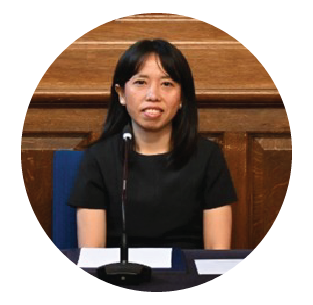FORMULATION OF CREAM BODY SCRUB FROM ETHANOL EXTRACT OF CASSAVA LEAVES (Manihot esculenta) AS ANTIOXIDANT

Downloads
Background: Plant cassava leaves (Manihot esculenta) are known flavonoid is efficacious as antioxidant. Antioxidant can prevent damage to the skin by reducing free radical activity. Purpose: The purpose of this study to determine the concentration of ethanol extract of leaves of cassava can be formulated into dosage cream body scrub which have antioxidant activity. Method: Cassava leaf extract obtained by maceration using 97% ethanol. Determination of antioxidant activity by the method of reduction of free radical DPPH (1,1-diphenyl-2-picryl-hydrazyl). Result: The ethanol extract of cassava leaves are formulated into dosage cream body scrub with concentration variations 0,0085 mg/mL (formula 1), 0,017 mg/mL (formula 2), and 0,0255 mg/mL (formula 3). Stability test preparation cream body scrub using cycling tests performed for 6 cycles. Preparation cream body scrub to formula I has a moderate antioxidant activity with IC50 158,16 µg/mL, formula 2 has an active antioxidant activity with IC50 66,59 µg/mL, and formula 3 has a stronger antioxidant activity with IC50 38,80 µg/mL. Conclusion: Cream body scrub and cassava ethanol extract does not irritate so it is safe to use. Preparations cream body scrub well have the most activity at a concentration of 0,0255 mg/mL with IC50 38,80 µg/mL.
Depkes RI, 1985, Formularium Kosmetik Indonesia. Direktorat Jenderal POM, Jakarta.
Erungan, C., A., Sri, P., Syeni, B., A. 2009. Aplikasi Karaginan Dalam Pembuatan Skin Lotion, Jurnal Pengolahan Hasil Perikanan Indonesia. Vol 12(2). Pp. 129-144
Fitriana, A.Y., Retno, W., Sudarso. 2012. Daya Repelan Dan Uji Iritasi Formula Lotion Ekstrak Etanol Daun Sirih (Piper betle Linn) Dengan Variasi Basis Lanolin Terhadap Nyamuk Aedes aegypti. Pharmachy, 9(2). Pp. 39-57.
Food and Drug Administration. 2003. Guidance for Industry Photosafety Testing. www.fda.gov/cder/guidance/index.htm. Accessed at 1 May 2020.
Gennaro, A.R., 2000. Remington: The Science and Practice of Pharmacy, 20th ed. Lippincott Williams & Wilkins, London.
Gennaro, A.R., 2005, Remington and Practice of Pharmacy, 18th Ed, Philadelphia College of Pharmacy and Science, Philadelphia.
Mukhlisah, N. R. I., Sugihartini, N., Yuwono, T. 2016. Daya Iritasi dan Sifat Fisik Sediaan Salep Minyak Atsiri Bunga Cengkeh (Syzigium aromaticum) pada Basis Hidrokarbon. Majalah Farmaseutik Vol. 12(1). Pp. 372-376
Purwanto., Swastika, A. M. 2013. Aktivitas Antioksidan Krim Ekstrak Sari Tomat (Solanum lycopersicum L.). Traditional Medicine Journal. Vol.18(3). Pp. 132-140
Tjandrawinata., Raymond, R. 2011. Anti Aging. Medicinus: Scientific Journal Of Pharamceutical Development And Medical Application, Vol.24(1). Pp. 1-5
Rosiana, N.D., Eliana, T.I., Sulistian, E. 2013. Efek Ekstrak Daun Singkong (Manihot Esculenta) Terhadap Ketebalan Regenerasi Epitel Lesi Traumatik Pada Mencit BALB/C Jantan. Artikel Ilmiah Hasil Penelitian Mahasiswa Universitas Negeri Jember 2013. Pp. 1-5
Setiati S. Radikal bebas, antioksidan, dan proses menua. Tinjauan Pustaka. Medika 2003; 6:366-9.
Siyumbwa. S., Ngizan. N., Patrick. N.O. 2012. Antioxidant And Gastro Protective Activity Of Ethanolic Rind Extract Of Manihot esculenta Crantz, International Journal Of Pharmaceutical Research Scholars. Vol. 3(2). Pp. 798-808
Sukrasno, K. R., Wirasutisna & Fidrianny, I.. 2007, Pengaruh Perebusan terhadap Kandungan Flavonoid dalam Daun Singkong. Jurnal Obat Bahan Alam, Vol.6(2). Pp.55-59
The Lubrizol Corporation, 2014, NovemerTM EC-1 Polymer Multifunctional Liquid Polymer for Skin and Sun Care in O/W Emulsions, Tech. Data Sheet.
Voight, R., 1994, Buku Pelajaran Tekhnologi Farmasi, Gajah Mada University Press, Yogyakarta.
Wihelmina. 2011. Pembuatan dan Penentuan Nilai SPF Nanoemulsi Tabir Surya Menggunakan Minyak Kencur (Kaempferia galanga L.) Sebagai Fase Minyak, Skripsi, Universitas Indonesia, Depok.
Zuhra C. F., Juliati Br. Tarigan, Sihotang, H. 2008. Aktivitas Antioksidan Senyawa Flavonoid dari Daun Katuk (Sauropus Androgunus (L) Merr.). Jurnal Biologi Sumatera,Vol. 3(1). Pp. 7-10
Copyright (c) 2020 Journal of Vocational Health Studies

This work is licensed under a Creative Commons Attribution-NonCommercial-ShareAlike 4.0 International License.
- The authors agree to transfer the transfer copyright of the article to the Journal of Vocational Health Studies (JVHS) effective if and when the paper is accepted for publication.
- Legal formal aspect of journal publication accessibility refers to Creative Commons Attribution-NonCommercial-ShareAlike (CC BY-NC-SA), implies that publication can be used for non-commercial purposes in its original form.
- Every publications (printed/electronic) are open access for educational purposes, research, and library. Other that the aims mentioned above, editorial board is not responsible for copyright violation.
Journal of Vocational Health Studies is licensed under a Creative Commons Attribution-NonCommercial-ShareAlike 4.0 International License














































